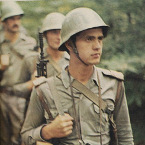gbem
Posts: 187
Joined: 11/19/2018
Status: offline

|
quote:
Helicopters operate in a fundamentally different way than fixed-wing close air support. Since the advent of anti-tank helicopters in the early to mid-1970s (as opposed to the gunship helicopters of Vietnam era, or similar Soviet Afghanistan deviations for COIN purposes) the tactics have been more or less the same.
1) Helicopter commander receives orders to plan for deployment on order to the designated battle position. This is a zone with a line of sight to the desired engagement area and some sort of protective terrain to hide behind. These battle positions are usually designated at brigade or higher HQs in coordination with supported units (for example, attack helicopter units in the US Army are never OPCON to an echelon below brigade). In nearly all cases, they are allocated before the battle during the mission planning process. Generally, several mission alternatives are provided, with various trigger points.
2) Helicopter refuel and rearm in a Forward Arming and Refueling Point (FARP). FARP in US doctrine is located approximately 17 to 25 kilometres from the forward edge of the battle area (FEBA) or forward line of own troops (FLOT).
3) Helicopters loiter at a Forward Assembly Area (FAA) while waiting for a mission, usually landed and powered off to save fuel.
4) When activated for a mission, helicopters pause in a Holding Area (HA) just behind the forward battle area while final coordination and recon are conducted.
5) On final go-ahead, helicopter unit advances via covered Attack Route (AR) to their BP.
6) Within the BP, each pilot selects a Firing Position (FP).
7) Pilots execute target engagement drill:
a. Spotter identifies the target in BR area. This can be a scout helicopter or some observer from the supported units.
b. Target is handed off to an attack helicopter by specifying type and location.
c. Attack helicopter pop-up to clear cover sufficiently to acquire the target.
d. While hovering, attack helicopter identifies the target and engages.
e. Upon resolution of engagement, helo drops back behind cover and proceeds to a new FP to avoid being pinned by enemy fire.
f. Total time of exposure should be <20 seconds for max range SACLOS weapon such as TOW, <10 seconds for unguided ordnance like rockets.
The point is that helicopters do not cruise across the terrain looking for targets and making moving firing passes the way a fixed-wing aircraft would. Helicopters are too valuable and fragile asset to allow manoeuvre commanders to make precipitous and possibly ill-advised on-the-spot redeployment decisions. Either they come in as planned, or they abort completely.
Still, we have introduced HQ assist command on popular demand (also to allow for a more flexible use of pure gunship helicopters like AH-1G or some Mi-8 variants), and helicopters are now significantly more survivable.
as 22sec stated the soviet hind wasnt operated in such a method... rather it operated in a aircraft esque situation providing firesupport for the infantry it just dropped off
also shouldnt BPs at least be movable or reassignable?
|
 Printable Version
Printable Version






 . I do like your idea.
. I do like your idea. 

 New Messages
New Messages No New Messages
No New Messages Hot Topic w/ New Messages
Hot Topic w/ New Messages Hot Topic w/o New Messages
Hot Topic w/o New Messages Locked w/ New Messages
Locked w/ New Messages Locked w/o New Messages
Locked w/o New Messages Post New Thread
Post New Thread